I shoved a book in the freezer for the first time a few days ago. It felt weird to do at the time (and don’t worry, “book abuse” protesters, I slipped it into a freezer bag first), and more than a little silly. But the book was scary enough that I didn’t take it out until morning. I’ve only recently started to get into horror fiction, and this was my first encounter with a freezer book, a concept with which frequent horror readers are likely familiar. A freezer book is a book that freaks you out so much that, in order to sleep soundly and safely away from the danger within its pages, you have to put it on ice.
Of course you could also put the book in question at the bottom of a stack of other books, put it in a drawer, put it in your closet (though given the propensity of closet monsters found in most houses, it is not recommended you give them reading material as they may remain indefinitely), bury it at the bottom of your hamper, or maybe even lock it in your car. Anything to assure yourself that what’s in there is not getting out here while you’re sound asleep and unaware.
But the freezer is a classic, after all.
This history of readers sticking scary books in the ice box can be attributed to a scene in the Friends episode “The One Where Monica and Richard Are Just Friends,” during which Rachel finds a copy of Stephen King’s The Shining in Joey’s freezer. Which prompts Joey to admit that he got scared while reading the book and stuck in there the night before: “I mean, I never start reading The Shining without making sure we’ve got plenty of room in the freezer, y’know.”
via GIPHY
Even bookish people who never watched Friends (myself included) tend to hear about this scene eventually, because Joey’s freezer-related idiosyncrasy has become something of a superstition in its own right. Scary book? (Or emotional book, given that Joey apparently also put Little Women in the freezer later in the episode.) Put it in the freezer. Deep freeze that monster! It’s a philosophy I’m going to keep in mind as I delve further into my new genre.
I say new genre, but that is not entirely correct in my case. I used to be a horror reader, and then at some point I stopped. I moved on to other genres, and I’m not quite sure what happened to the kid that used to devour every Goosebumps, Mary Downing Hahn, Lois Duncan, and Vivian Vande Velde she could get her hands on. I cut my baby vampire fangs on Amelia Atwater-Rhodes’s surprisingly violent and dark YA books (which explains a LOT about me, really). I used to love being scared.
But despite having an avid horror reader for a mother, as I got older I never made the jump to adult horror fiction. I followed my love of Tamora Pierce’s books into fantasy instead. After a few years I was splitting my time between fantasy and romance, then eventually it was just romance, and then for a while I stopped reading for the most part. When I started again, I sort of went in reverse: first romance, then fantasy in the last few years. I guess it makes sense that I would eventually come around again to horror fiction, and sure enough, a few months ago, I found myself wondering why I hadn’t been reading horror all along.
My digging into the horror genre now is more than just rewinding my reading preferences, however. I don’t have to tell you that the world is on fire. And while we haven’t lost hope of putting it out and rebuilding some day, even turning on the daily news can be a lot to deal with. For some people, dealing with the real world means turning all their media consumption to lighthearted, hopeful material that assures them that yes, we will persevere in the end. Others find a similar message in dark and frightening narratives that assures us that while our monsters are real, they can be killed. Our fears are real, but they don’t have to defeat us. It’s not that I’ve given up romance and my belief in love, or fantasy and my belief in hope. But sometimes you just need to stab the monster (repeatedly), exorcise the demon, or burn down the monster house.
via GIPHY
It’s cathartic.
Whether you are interested in catharsis, or just love all things scary, if you are looking to for a place to get started in the horror genre I have a few suggestions to get you up and running. These are based on my own experiences, and are things that I have enjoyed thus far, so your own experiences may vary!
Podcasts for New Horror Readers
Most horror podcasts are film- and/or TV show–based. But there are a few out there that discuss horror fiction. There are also a number of spooky podcasts dealing in the reading/performance of horror fiction.
Books in the Freezer
Pressing play on the Books in the Freezer podcast was the best choice I could have made as a new horror reader. If you are interested in dipping your toes into the genre as well, I definitely recommend you give this excellent podcast a listen. Episodes are thematic, exploring everything from haunted houses to exorcisms, making it easy to find books that appeal to your particular spooky interests. Books in the Freezer took my horror TBR from 0 to substantial in just a few episodes.
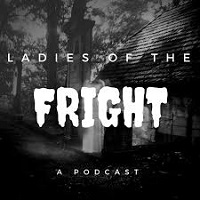 Ladies of the Fright
Ladies of the Fright
Self-described as being “For writers and readers who like it dark,” Ladies of the Fright is a smart, fascinating podcast that provides literary analysis of works of dark fiction. For the purposes of this podcast, that can mean horror and dark fantasy, among other things. The show features interviews with familiar faces in the genre, from short fiction editor Ellen Datlow to authors like Stephen Graham Jones and Kat Howard to prominent reviewers like Sadie Hartmann (aka Mother Horror, and one of the creators of the Night Worms horror subscription service).
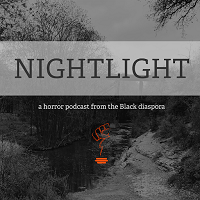 Nightlight
Nightlight
Nightlight is the go-to anthology podcast for original horror stories by black authors. Featuring both classic stories and new material from authors like W.E.B. Du Bois and Justina Ireland, Nightlight features a story an episode, complete with background music and sound effects, as well as excellent narration from host Tonia Thompson. There are a fair number of horror fiction podcasts out there these days, but Nightlight is the only one I’ve found that focuses exclusively on black horror fiction.
For more scary podcast fun check out this list of 3 Pee-Your-Pants Horror Podcasts.
Nonfiction Books for New Horror Readers
When I start in a new genre, I like to throw some nonfiction books about the genre into my TBR with the fiction. I like the difference in perspective that comes from knowing the history of a genre, and horror has a long, fascinating history of new readers to enjoy.
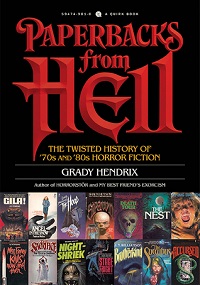 Paperbacks from Hell by Grady Hendrix
Paperbacks from Hell by Grady Hendrix
Grady Hendrix’s nonfiction work about the paperback horror boom of the ’70s and ’80s is a must read. His love of the genre shines through as he pokes gentle fun at some of the era’s more entertaining reads, and speaks with genuine appreciation of other titles whose horrors stand the test of time. Since the publication of Hendrix’s book, the phrase “Paperbacks from Hell” has become synonymous with these paperback horrors. People use it as a tag on Instagram to share their latest vintage finds with the community, and publisher Valancourt Books has actually republished five of these works, all of which are on my TBR.
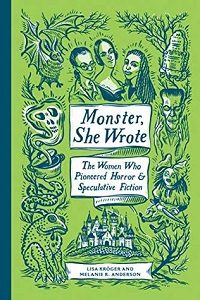 Monster, She Wrote: The Women Who Pioneered Horror and Speculative Fiction by Lisa Kröger and Melanie R. Anderson (September 17, 2019)
Monster, She Wrote: The Women Who Pioneered Horror and Speculative Fiction by Lisa Kröger and Melanie R. Anderson (September 17, 2019)
So I’m cheating a bit, because I haven’t read this book yet. As you can see from the date above, it’s not going to be published until September. But I can’t wait to get my hands on it. Monster, She Wrote will cover not just the female writers that most horror readers are already familiar with (such as Mary Shelley and Shirley Jackson), but also authors like Margaret Cavendish and Ruby Jean Jensen, who are less well known but who played an equal part in the creation of the horror genre.
Short Fiction for New Horror Readers
The great thing about short fiction is that it gives you an idea of an author’s style before you commit to a full length. And horror short fiction is great for new horror readers because it gives you snapshots of the genre that can help you to distinguish what you like and what you definitely don’t. Below are the two collections I read which paved my way into horror fiction, but you can also take a look at this list of 13 Short Horror Story Collections for other suggestions, or these scary short stories that you can read for free online.
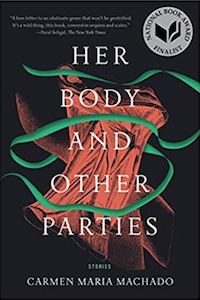 Her Body and Other Parties by Carmen Maria Machado
Her Body and Other Parties by Carmen Maria Machado
I was late late late to the game with Machado’s collection and only got around to reading it this winter, so maybe you’re already one step ahead of me here. But if you haven’t read Her Body and Other Parties yet, you really should consider adding it to your TBR. Machado’s work is dark and beautiful, with the sort of imagery that sticks with you. My favorite was “Inventory,” in which the narrator makes an inventory of their lovers as the world around them collapses in the midst of a plague-driven apocalypse. It has this soft sorrow to it that I still catch myself thinking about even months later.
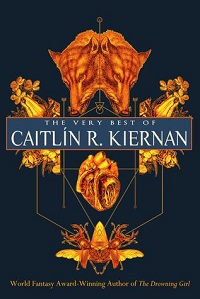 The Very Best of Caitlín R. Kiernan by Caitlín R. Kiernan
The Very Best of Caitlín R. Kiernan by Caitlín R. Kiernan
Reading Machado’s collection sort of sent me on a horror/dark fantasy short story marathon. So I immediately jumped the other collection in my TBR. Caitlín R. Kiernan was another new-to-me author and I am officially a fan for life now. Her short stories were 110% my thing in so many ways. Not only does she have a tendency to work within the Lovecraftian scope, but she also tends to work (and not just within her Lovecraftian stories) with the sea. Give me gloomy, misty, sea-themed horror everyday of my life and will be a happy fish. I’m not even sure I can pick a favorite, but “Andromeda Among the Stones” is high on the list.
Horror readers all come to the genre in different ways, so be sure to check out these accounts of how other readers fell for horror, and why they continue to read.
And I’m always excited to hear about other readers’ “firsts” when getting into a genre, so if you have a podcast or book that helped you get into horror, tweet it at me!
Source : I Stuck a Book in My Freezer: Resources for New Horror Readers










